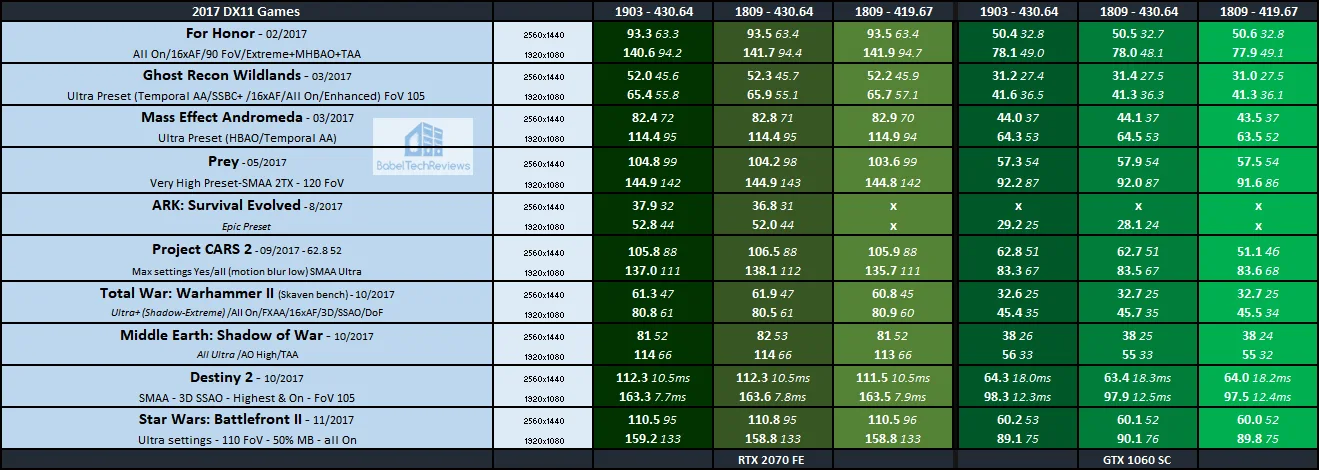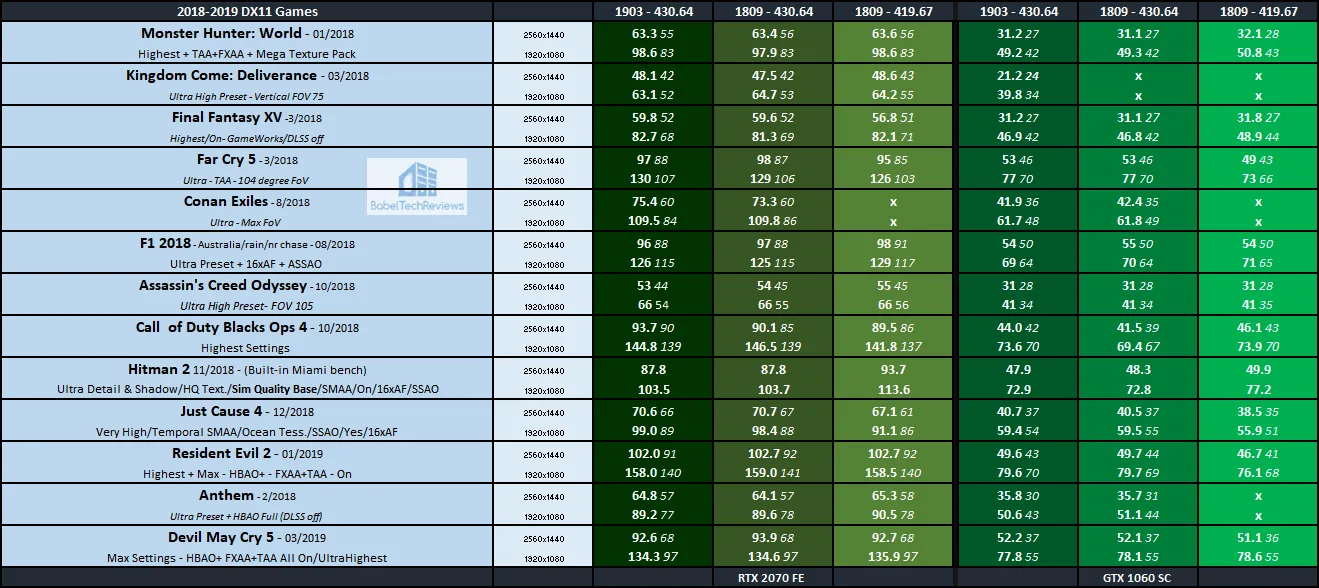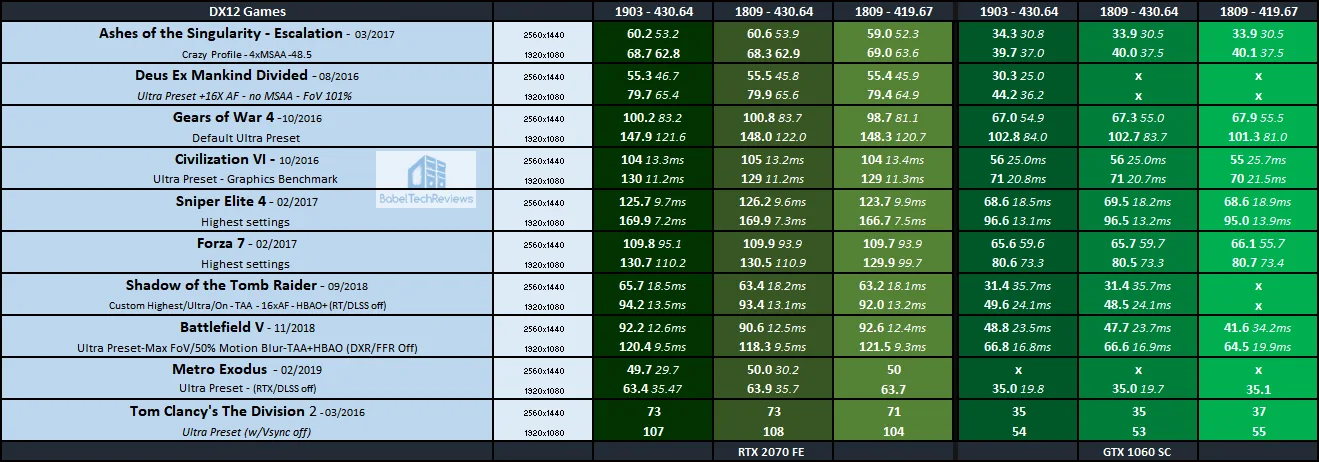Windows May 2019 Update Performance Analysis (1903 vs. 1809) – 42 games benchmarked using the RTX 2070 and the GTX 1060
The Windows 10 May 2019 Update (version 1903) released last week, and this performance analysis will showcase gaming using the RTX 2070 Founders Edition (FE) and the GTX 1060-6GB cards. We will compare the performance of 42 PC games on the latest Windows May 2019 update versus the October update (version 1809) using GeForce Game Ready 430.64 driver, and we will also compare these drivers versus 419.67.

We document the performance changes of the latest Windows version 1903 from 1809 at 1920×1080 and at 2560×1440 resolutions using the latest games including Anthem, Devil May Cry 5 and The Division 2. We replaced Battlefield 1 with Overwatch and dropped The Division 1, The Crew 2, and Hitman from last month’s benching suite, and we also added ARMA III, Conan Exiles, and ARK: Survival Evolved.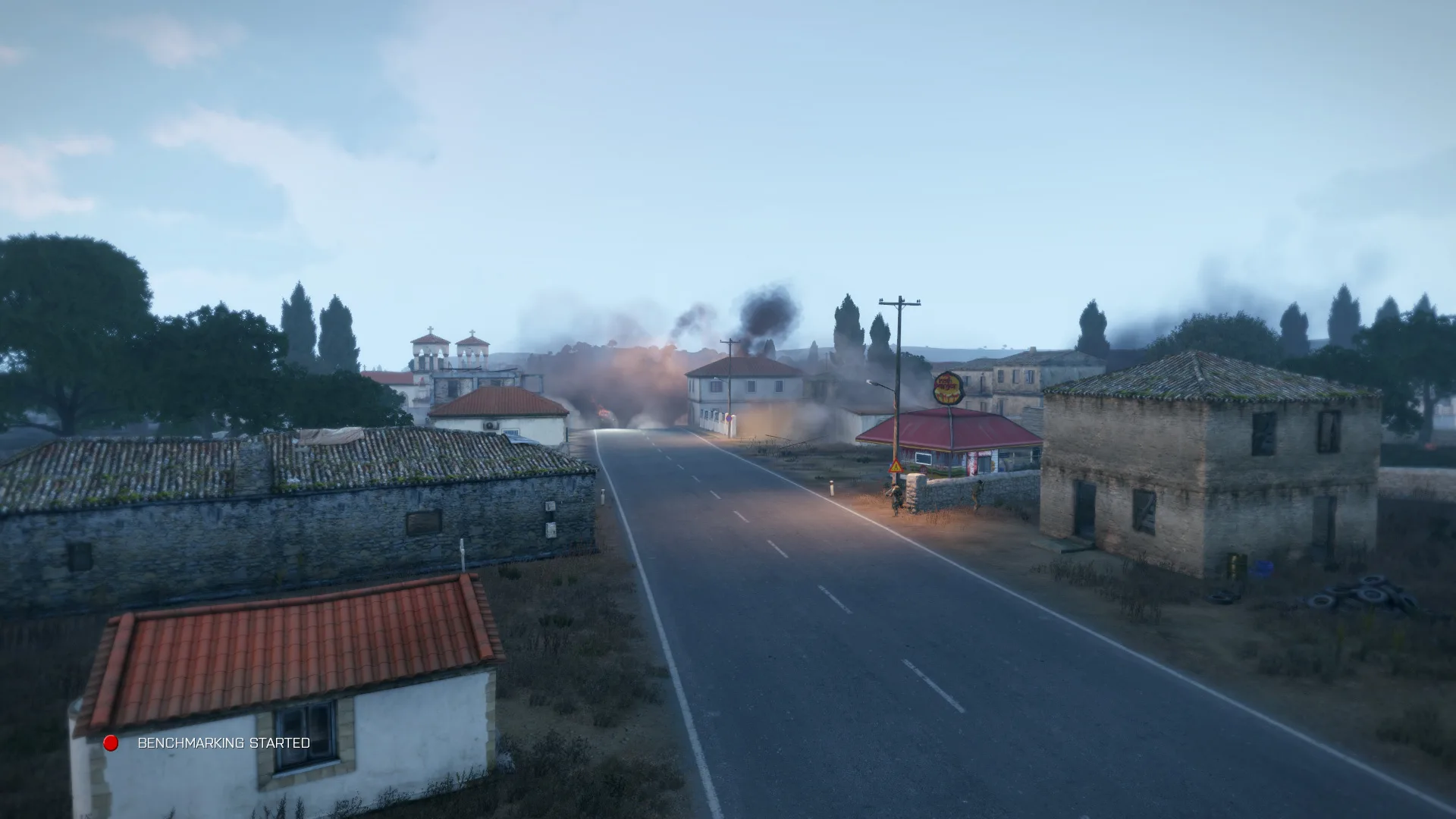
We recently upgraded our testing platform using a Core i7-8700K which turbos all 6 cores to 4.8GHz (from 4.7GHZ), an EVGA Z370 FTW motherboard, and 16GB of T-FORCE XTREEM DDR4 at 3866MHz (from 3333MHz) The games tested, settings, and hardware are identical except for the Windows 10 versions being compared.
Test Configuration – Hardware
- Intel Core i7-8700K (HyperThreading and Turbo boost are on to 4.8GHz for all cores; Coffee Lake DX11 CPU graphics).
- EVGA Z370 FTW motherboard (Intel Z370 chipset, latest BIOS, PCIe 3.0/3.1 specification, CrossFire/SLI 8x+8x), supplied by EVGA
- T-FORCE XTREEM (2×8 GB, dual channel at 3866 MHz), supplied by Team Group
- RTX 2070 Founders Edition 8GB, at Founders Edition clocks, on loan from NVIDIA
- EVGA GTX 1060 SC 6GB, at SC clocks, on loan from EVGA
- 480 GB Team Group SSD
- 1.92 TB San Disk enterprise class SSD
- 2 TB Micron 1100 SSD
- Seasonic 850W Gold Focus power supply unit
- EVGA CLC 280mm CPU water cooler, supplied by EVGA
- EVGA Nu Audio stereo PCIe sound card, on loan from EVGA
- Edifier R1280T active desktop speakers
- Grado SR60e headphones
- EVGA DG-77, mid-tower case supplied by EVGA
- Monoprice Crystal Pro 4K
Test Configuration – Software
- Nvidia GeForce 430.64 and 419.67 WHQL drivers. The 419.67 performance results are from our earlier platform (i7-8700K at 4.7GHz instead of 4.8GHz; DDR4 at 3333MHz instead of 3866MHz).
- VSync is forced off.
- AA enabled as noted in games; all in-game settings are specified
- Gaming results show average frame rates in bold including minimum frame rates shown on the chart next to the averages in a smaller italics font.
- Highest quality sound (stereo) used in all games.
- Windows 10 64-bit Home edition. All DX11 titles were run under DX11 render paths. DX12 titles are generally run under the DX12 render path unless performance is lower than with DX11. Three games use the Vulkan API.
- Latest DirectX
- All 42 games are patched to their latest versions at time of publication.
- MSI Afterburner, latest beta.
- OCAT, latest version
- Fraps, latest version
- Yet Another ARMA Benchmark
42 PC Game benchmark suite & 3 synthetic tests
Synthetic
- Firestrike – Basic & Extreme
- Time Spy DX12
- Superposition
DX11 Games
- ARMA III
- Grand Theft Auto V
- The Witcher 3
- Fallout 4
- Rainbow Six Siege
- Overwatch
- For Honor
- Ghost Recon Wildlands
- Mass Effect: Andromeda
- Prey
- ARK: Survival Evolved
- Project CARS 2
- Middle Earth: Shadow of War
- Total War: Warhammer II
- Destiny 2
- Star Wars: Battlefront II
- Monster Hunter: World
- Kingdom Come: Deliverance
- Final Fantasy XV
- Far Cry 5
- Conan: Exiles
- F1 2018
- Assassin’s Creed: Odyssey
- Call of Duty: Black Ops 4
- Hitman 2
- Just Cause 4
- Resident Evil 2
- Anthem
- Devil May Cry 5
DX12 Games
- Ashes of the Singularity: Escalation
- Deus Ex Mankind Divided
- Gears of War 4
- Civilization VI
- Sniper Elite 4
- Forza 7
- Shadow of the Tomb Raider
- Battlefield V
- Metro Exodus
- Tom Clancy’s The Division 2
Vulkan Games
- DOOM
- Wolfenstein: The New Colossus
- Strange Brigade
NVIDIA Control Panel settings
Here are the NVIDIA Control Panel settings.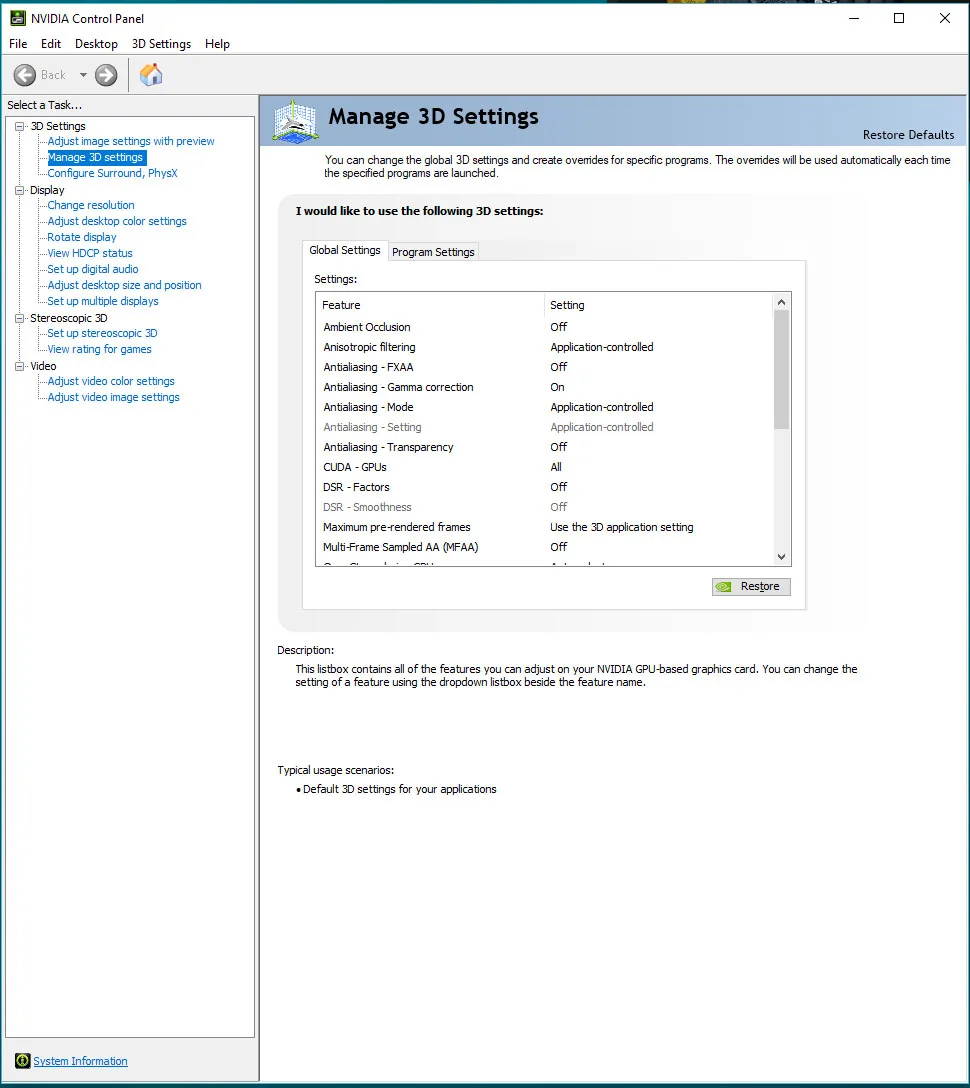
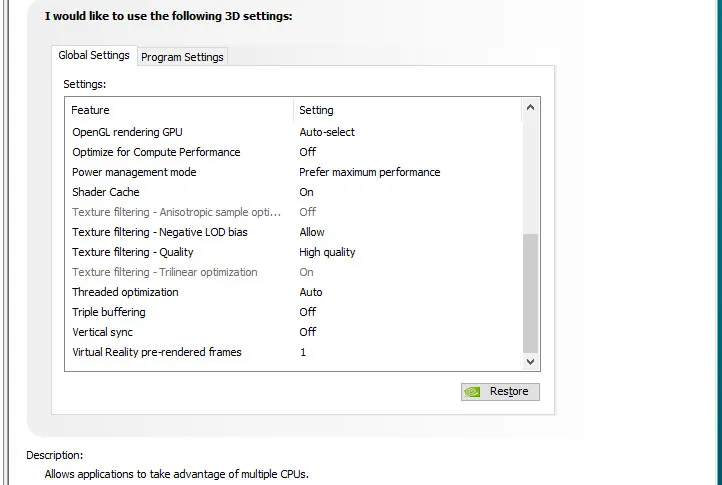 We used MSI’s Afterburner to set our GeForce cards’ highest Power and Temperature targets. By setting the Power Limits and Temperature limits to maximum, itcan maintain their maximum clocks without throttling.
We used MSI’s Afterburner to set our GeForce cards’ highest Power and Temperature targets. By setting the Power Limits and Temperature limits to maximum, itcan maintain their maximum clocks without throttling.
Let’s head to the charts to compare the performance changes from the Windows October (1809) version to the latest May (1903) version.
The Summary Chart
Below are the summary charts of 42 games and 3 synthetic tests used to compare the performance changes for the RTX 2070 and the GTX 1060-6GB from the Windows October (1809) version to the latest May (1903) version. The highest settings are always chosen and the settings are listed on the charts. The benches were run at 1920×1080 and at 2560×1440. Open each chart in a separate window or tab for best viewing.
Most results show average framerates and higher is better. Minimum framerates are next to the averages in italics and in a slightly smaller font. A few games benched with OCAT show average framerates but the minimums are expressed by the 99th percentile frametime in ms where lower numbers are better.
The first three columns shows the RTX 2070’s performance and the last three represent the GTX 1060 SC’s performance. For each card, the first column compares the Windows May update (version 1903) performance with the October update (version 1809) in the second both using GeForce 430.64. The third column for each card shows GeForce 419.67 on the older 1809 Windows build and on our very slightly slower platform.
We found no notable differences between gaming performance on the latest Windows May (1903) version compared with last October’s (1809) version although there are three multiplayer games that patched themselves while we were benching. Generally the results are well within what is considered the 3% margin of error, or “benchmarking noise”.
Let’s head to our conclusion.
Conclusion
We would recommend that gamers should upgrade to the latest Windows May update (1903) from any older build because there are generally stability, security, or performance advantages overall. We found the latest Windows 10 build to be stable and relatively bug-free which is in contrast to what we experienced after the last October 1809 update. In fact, the May update fixed a couple of ongoing issues that we experienced using the 1809 Windows 10 version. We found no issues with Wi-Fi connectivity nor with BattleEye’s anti-cheat games as some users have reported.
BTR would like to hear from our regular readers. We plan to add new popular games as they are released and we are considering adding Apex: Legends and Fortnite. Let us know if there are other games that you play that you would like to see us benchmark and track. And please let us know which games that are included in the current benchmarking suite that should be dropped as outdated or irrelevant. Please use Disqus to comment below.
A brand new Game Ready 430.86 driver dropped this morning in anticipation of RTX Quake II which will be released on June 6. We plan to compare this driver’s performance with 430.64 before Friday. And we will search for our Quake II installation CD to bring you RTX performance results shortly after June 6. Stay tuned to BTR for the latest!
Happy gaming!


